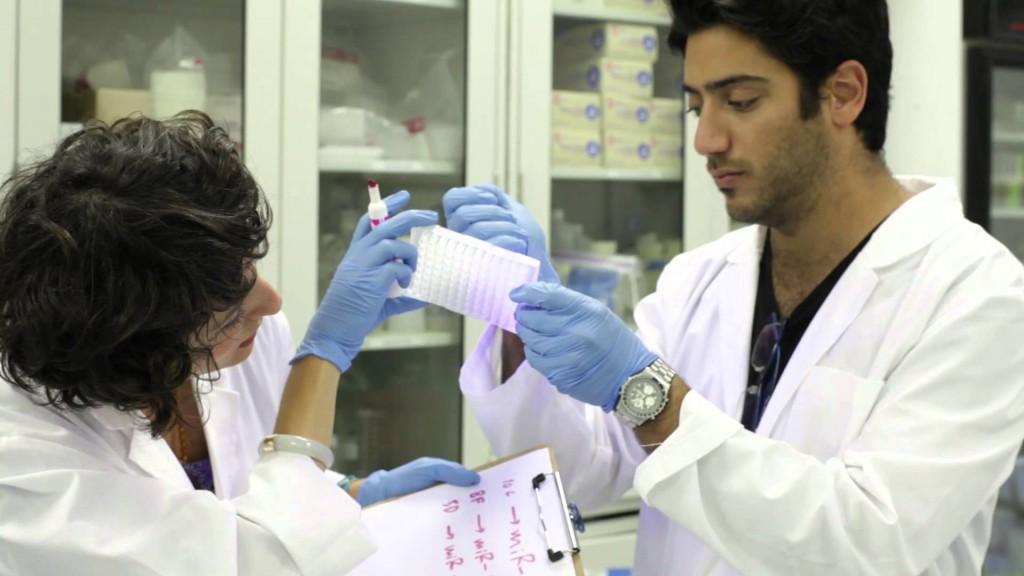Miroculus Technology Brings 3D Printing to the Molecular Level With One-Step Cancer Diagnosis Device
 With the uses of 3D printing abounding, there seems to be a shift on every level, including a molecular one.
With the uses of 3D printing abounding, there seems to be a shift on every level, including a molecular one.
Miroculus, a startup composed of worldwide researchers and developers, has developed a new 3D printed device called Mirium that is a one-stop shop at your doctor’s office for pinpointing and diagnosing cancer. While their technology is still in the development phase, they offered a preview of their open-source, 3D printed device, ‘Mirium,’ at the TEDGlobal Conference in Rio de Janeiro last week. TED curator Chris Anderson said it was “one of the most thrilling demos in TED history.”
Miroculus’ new technology is an example of the shift occurring from conventional cancer diagnosis methods–which are not timely or affordable—to the inclusion of new science combined with 3D printing, which reverses those issues. Now if we could just reverse and prevent cancer. Being able to test more quickly and affordably for the onset and diagnosis of disease with rapid microRNA detection and testing is certainly enormous progress. So far, the Miroculus technology has been successfully tested in California, Germany, and Mexico.
Conventional techniques for testing microRNA require multiple steps and procedures. MicroRNA are noncoding ribonucleic acids (RNA) present in your body that are crucial to gene expression. Detection of microRNA is done through assaying tests, which are laboratory procedures performed by scientists who examine the activity and properties of ‘targets,’ or ‘analytes,’ and compare them on an enzymatic level to healthy cells.
As there are many molecule targets to test in detection, often causing the scientist to have to test each one individually, there could be as many as 50 targets or analytes to test. This takes a long time and is expensive.
“Millions die every year because their diagnosis came too late,” says Ferran Galindo of Panama, Head of Miroculus User Experience and Marketing. “Current diagnosis is inaccessible, expensive, and you have to know what you are looking for.”
What if microRNA detection, used in diagnosis of cancer, could be done with one simple blood test? Miroculus technology, based on microRNA, is currently being developed so that with their 3D printed device, ‘Mirium,’ a single test can be used at a doctor’s office to find and diagnose specific types of cancer.
“Miroculous provides an easy way to use a single test during a regular doctor checkup to check for many types of cancer, dramatically increasing the chances for treatment and recovery,” says Galindo.
Using a screen process for these markers, combined with fluorescence, scientists at Miroculus are able to use ‘biological fingerprints’ from an individual’s sample, applying a small drop of blood to a plastic plate or ‘well plate,’ where any cancer present lights up in colored fluorescence. Each cancer presents a specific fluorescent pattern on the plastic plate, miraculously revealing the specific type of cancer. The results are read by their plate reader and then photographed. The analysis takes about an hour. Miroculus uses Arduino software as well as smartphone technology for real-time analytics to ‘try and tackle one of humanity’s largest challenges.’
3D printing is helping the world in a multitude of positive ways—and adding to the fight against cancer is not just a huge bonus, but the relief we’ve been searching for, considering one in three people will be affected by cancer in their lifetime. Thanks to the innovations of scientists who have turned to the affordability and limitless creativity 3D printing offers, they are indeed changing the world, and perhaps giving many people the chance to live in it much longer.
“We aim to sneak up on cancer before it sneaks up on us,” says Dr. Pablo Oliveras of Miroculus.
Have you been involved in any medical science that involved 3D printing? Tell us about it in the Miroculus forum thread at 3DPB.com.
Subscribe to Our Email Newsletter
Stay up-to-date on all the latest news from the 3D printing industry and receive information and offers from third party vendors.
You May Also Like
3D Printing News Briefs, April 13, 2024: Robotics, Orthotics, & Hypersonics
In 3D Printing News Briefs today, we’re focusing first on robotics, as Carnegie Mellon University’s new Robotics Innovation Center will house several community outreach programs, and Ugogo3D is now working...
Rail Giant Alstom Saves $15M with 3D Printing Automation Software 3D Spark
3D Spark has entered into a three-year deal with the rail giant Alstom. Alstom, a transport behemoth with annual revenues of $16 billion, specializes in the manufacture of trains, trams,...
Meltio Expands Global Reach with New Partnerships in the Americas and Europe
Spanish 3D printing manufacturer Meltio has expanded its sales network across the globe. With the addition of three new partners in the United States, Brazil, Argentina, and Italy, Meltio aims...
3D Printing Webinar and Event Roundup: April 7, 2024
Webinars and events in the 3D printing industry are picking back up this week! Sea-Air-Space is coming to Maryland, and SAE International is sponsoring a 3D Systems webinar about 3D...



































